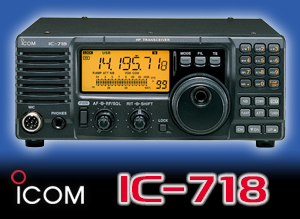Propagation News – 11 August 2024
Well, so much for the experts! NOAA predicted that the solar flux index would fall last week, when it actually increased to a whopping 303 on Thursday 8 August.
But this high solar flux number was accompanied by a strong risk of solar flares, so it was not all plain sailing. We have had 15 M-class and two X-class solar flare events over the past three days and the threat remains high.
Coronal mass ejection activity on Wednesday resulted in NOAA and the Space Weather Prediction Centre warning of possible moderate G2 geomagnetic storming towards the later part of week ending the 11 August. This could see the Kp index rise and the maximum usable frequency fall.
Hopefully, conditions will improve after the weekend.
Last week was a good one for HF propagation with a high solar flux index and low Kp index. The 10m band was open to Brazil in the late afternoon, and this appeared to be F2-layer propagation and not multi-hop Sporadic-E.
Meanwhile, the 15m band has perhaps been the DX band of choice with long openings to the Far East, at least on FT8, and North America at the same time. HF conditions should also improve as we move into September, but more on that closer to the time.
Attention now shifts to N5J on Jarvis Island, an uninhabited 4.5-kilometre-squared coral island in the South Pacific Ocean, about halfway between Hawaii and the Cook Islands. The DXpedition is active on all bands and their website at Jarvisisland2024.com can provide you with personalised propagation forecasts – let us know if you work them.
Using Proppy at soundbytes.asia or VOAcap at voacap.com, shows that 20, 17 and 15m short-path seem to offer the best chance of working the DXpedition, with morning openings from around 0600 to 1000UTC. There is also a potential long-path opening between 1800 and 2000UTC, with a possibility of the 10m band at 1900UTC. Both are near polar paths and may be adversely affected by a high Kp index.
CDXC members with good stations have already reported QSOs with N5J on the 17m band using FT8.
Next week, NOAA predicts the solar flux index will be in the range of 185 to 240. Geomagnetic conditions will depend on whether we have more solar flares and coronal mass ejections, and the chance of those remains high.
An Earth-facing coronal mass ejection could send the Kp index soaring, and that will no doubt lead to reduced maximum useable frequencies and noisy bands. So, fingers crossed for more quiet geomagnetic conditions and low Kp indices!
VHF and up
The summer tries to deliver but, overall, the pattern has a rather unsettled flavour to it for the coming week.
On the positive side, we see a transient area of high pressure crossing southern Britain over this weekend, ending today the 11 August. This could give some Tropo conditions but, after this, the Atlantic westerly flow brings a succession of fronts and showers to most areas.
In terms of propagation, this suggests that rain scatter will have the best of it in the week ahead.
The Sporadic-E season remains a good fallback and surprised us in East Anglia mid-morning on Tuesday 6 August with 144MHz Sporadic-E propagation to YU, HA, 9A and LZ moving around towards Italy as the opening progressed.
All were workable with 100W and a white stick antenna on FT8. For the coming week, the jet stream activity will probably start by favouring paths to Scandinavia and the Baltic. Later in the week a new jet stream will drive southeast into Iberia, opening up chances for paths to EA and CT.
The Perseids meteor shower this week will provide welcome new fuel for Sporadic-E and, as a result, like most years, we’ll see openings into the first week of September.
The meteor scatter highlight is the Perseids meteor shower, which peaks on Monday and Tuesday. So, there are plenty of opportunities to try a new mode or fill in some missing grid squares if you are already involved in meteor scatter.
Many websites explain what it’s all about, but one to start you off is available here Also, try looking for videos of meteor activity on SDR radios to get an idea of what it all sounds like.
The solar conditions lately have been rather disturbed. It would not be surprising if the Kp index was to suggest that aurora could be a possibility, if it gets to 5 or higher.
Moon declination is negative and reaches minimum on Thursday the 15 August, which means there will be short Moon visibility windows and low peak elevation. Path losses will decrease throughout the week and 144MHz sky noise is low over the weekend, but climbing to reach a high peak of over 3200 Kelvin on the 15 August.
Category: GB2RS Propagation News











